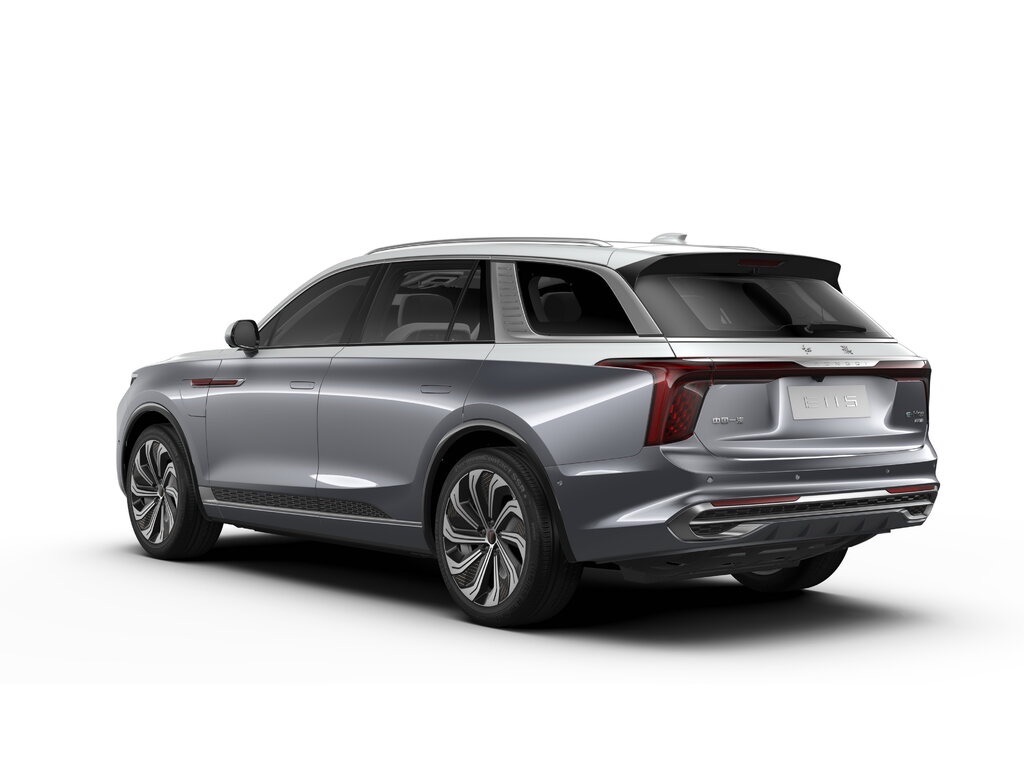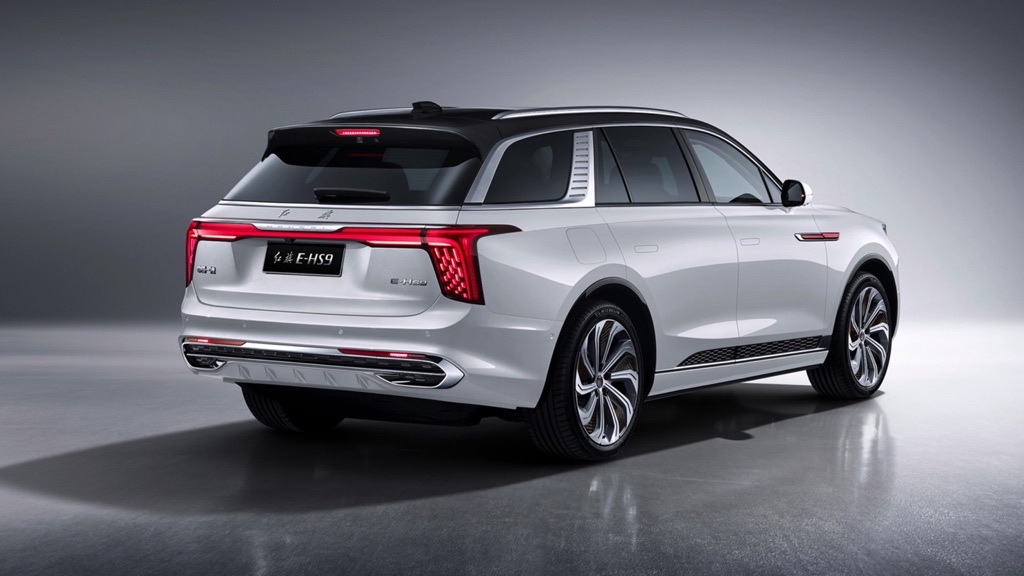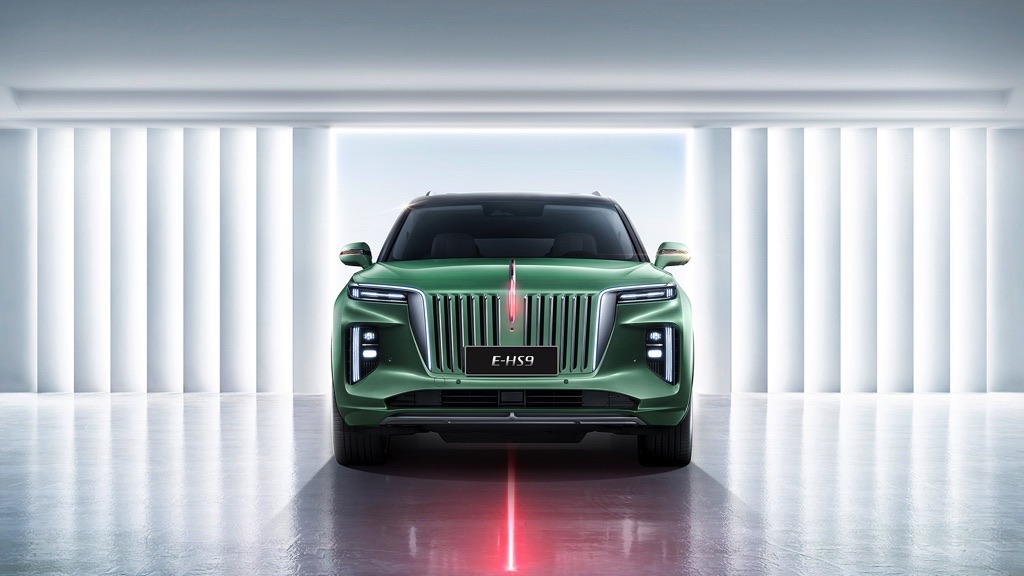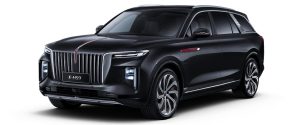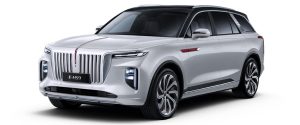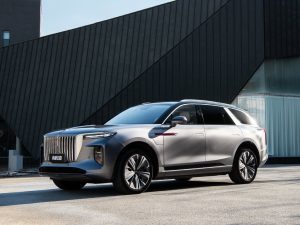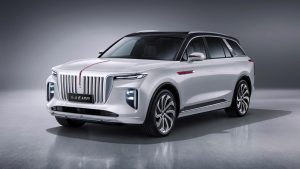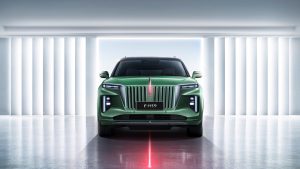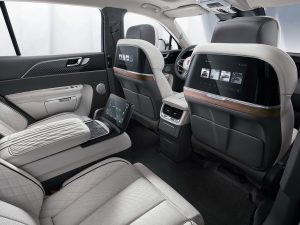Hongqi E-HS9 84 kWh
The Hongqi E-HS9 is a luxury electric SUV manufactured by the Chinese automaker, FAW Group under its Hongqi brand. The E-HS9 model was launched in 2020 as the first electric vehicle from Hong Kong.
The E-HS9 is equipped with an 84 kWh lithium-ion battery pack that powers two electric motors (one on the front axle and one on the rear axle), providing a combined power output of 600 Nm of torque. The vehicle has a range of up to 305 km on a single charge (WLTP cycle) and can accelerate from 0 to 100 km/h in just 6.5 seconds.
In terms of design and features, the Hongqi E-HS9 offers a luxurious and spacious interior, with a 12.3-inch touchscreen display, advanced driver assistance systems, and a 10-speaker sound system as standard. The car also comes with advanced safety features, including adaptive cruise control, lane departure warning, and blind-spot monitoring.
Overall, the Hongqi E-HS9 is an impressive electric SUV that combines luxury and performance with long-range capability and advanced technology. It is primarily available in the Chinese market and is considered one of the high-end electric vehicles in the country.
| Performance | |
| Acceleration 0 – 100 km/h | 6.5 sec |
| Top Speed | 200 km/h |
| Electric Range | 305 km |
| Total Power | 320 kW (435 PS) |
| Total Torque | 600 Nm |
| Drive | AWD |
| Battery and Charging | |
| Battery Capacity | 84.0 kWh |
| Battery Useable | 76.5 kWh |
| Europe | |
| Charge Port | Type 2 |
| Port Location | Right Side – Rear |
| Charge Power | 11 kW AC |
| Charge Time (0->305 km) | 8h15m |
| Charge Speed | 37 km/h |
| Fast charge Port | CCS |
| FC Port Location | Right Side – Rear |
| Fast charge Power (max) | 125 kW DC |
| Fast charge Time (31->244 km) | 30 min |
| Fast charge Speed | 420 km/h |
| Energy Consumption | |
| EVDB Real Range | |
| Range | 305 km |
| Vehicle Consumption | 251 Wh/km |
| CO2 Emissions | 0 g/km |
| Vehicle Fuel Equivalent | 2.8 l/100km |
| WLTP Ratings | |
| Range | 396 km |
| Rated Consumption | No Data |
| Vehicle Consumption | 193 Wh/km |
| CO2 Emissions | 0 g/km |
| Rated Fuel Equivalent | No Data |
| Vehicle Fuel Equivalent | 2.2 l/100km |
|
Rated = official figures as published by the manufacturer. Rated consumption and fuel equivalency figures include charging losses.
|
|
|
Vehicle = calculated battery energy consumption used by the vehicle for propulsion and onboard systems.
|
|
| Real Energy Consumption Estimation between 172 – 348 Wh/km | |
| City – Cold Weather | 239 Wh/km |
| Highway – Cold Weather | 348 Wh/km |
| Combined – Cold Weather | 289 Wh/km |
| City – Mild Weather | 172 Wh/km |
| Highway – Mild Weather | 283 Wh/km |
| Combined – Mild Weather | 225 Wh/km |
|
Energy use for each trip will vary considerably depending on the driver and the conditions. Therefore, we have provided a range of estimates which can be useful in developing an understanding of the potential benefits of this technology.
|
|
| Dimensions and Weight | |
| Length | 5209 mm |
| Width | 2010 mm |
| Width with mirrors | No Data |
| Height | 1731 mm |
| Wheelbase | 3110 mm |
| Weight Unladen (EU) | 2580 kg |
| Gross Vehicle Weight (GVWR) | 3130 kg |
| Max. Payload | 625 kg |
| Cargo Volume | 438 L |
| Cargo Volume Max | 1814 L |
| Cargo Volume Frunk | No Data |
| Roof Load | 75 kg |
| Tow Hitch Possible | Yes |
| Towing Weight Unbraked | No Data |
| Towing Weight Braked | 1500 kg |
| Vertical Load Max | No Data |
| Miscellaneous | |
| Seats | 5 people |
| Isofix | No Data |
| Turning Circle | No Data |
| Platform | BMW CLAR |
| Car Body | SUV |
| Segment | JE – Executive |
| Roof Rails | Yes |
| EV Dedicated Platform | No |
Home and Destination Charging (0 -> 100%)
A public charging station is required to use the highest possible charging rate. The EVSE/charging station’s charging capacity affects how long it takes to fully charge the battery. The table below shows all possible options for fully charging the Hongqi E-HS9 84 kWh.
In Europe, plugging an electric car into an outlet is often as easy as plugging it into a household outlet, but there are differences from country to country. The table below shows the different ways to charge the Hongqi E-HS9 84 kWh, but in some countries, some chargers may not be available.
Type 2 (Mennekes – IEC 62196)

| Charging Point | Max. Power | Power | Time | Rate |
| Wall Plug (2.3 kW) | 230V / 1x10A | 2.3 kW | 39h15m | 8 km/h |
| 1-phase 16A (3.7 kW) | 230V / 1x16A | 3.7 kW | 24h30m | 12 km/h |
| 1-phase 32A (7.4 kW) | 230V / 1x32A | 7.4 kW | 12h15m | 25 km/h |
| 3-phase 16A (11 kW) | 400V / 3x16A | 11 kW | 8h15m | 37 km/h |
| 3-phase 32A (22 kW) | 400V / 3x16A | 11 kW | 8h15m | 37 km/h |
Fast Charging (10 -> 80%)
If you want to enjoy driving an electric car, one of the most important features to consider is the number of miles per hour the car can travel while charged. This is called the “range” of the car. All electric cars have a certain range, even if they are 100% charged. This is because they do not have an internal combustion engine to lean on if you need to drive a long distance.
Max. Power: The maximum power provided by the charging point
Avg. Power: The average power provided by the charging point during a session of 10% to 80%.
Time: the time it takes to charge from 10% to 80%
Speed: the average charging rate during the session of 10% to 80%
Combined Charging System (CCS Combo 2)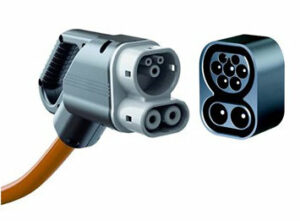
| Charging Point | Max. Power | Avg. Power | Time | Rate |
| CCS (50 kW DC) | 50 kW | 45 kW | 75 min | 170 km/h |
| CCS (100 kW DC) | 100 kW | 90 kW | 38 min | 330 km/h |
| CCS (150 kW DC) | 125 kW | 112 kW | 30 min | 420 km/h |
| Brand | Hongqi |
| Model | E-HS9 84 kWh |
| Body Style | SUV |
| Car Engine | electric |
| Motor power | 320 |
| Maximum Torque, Nm | 600 |
| Battery Energy, kWh | 84.0 |
| Power reserve (NEDC/EPA/WLTP), km | - / - / 305 |
| Level Charging (230/400/DC), hours | 12.15 / 8.15 / 0.30 |
| Electrical Acceleration, 0-100 km/h (0-62.1 mph) in sec | 6.5 |
| Top Speed, km/h | 200 |






